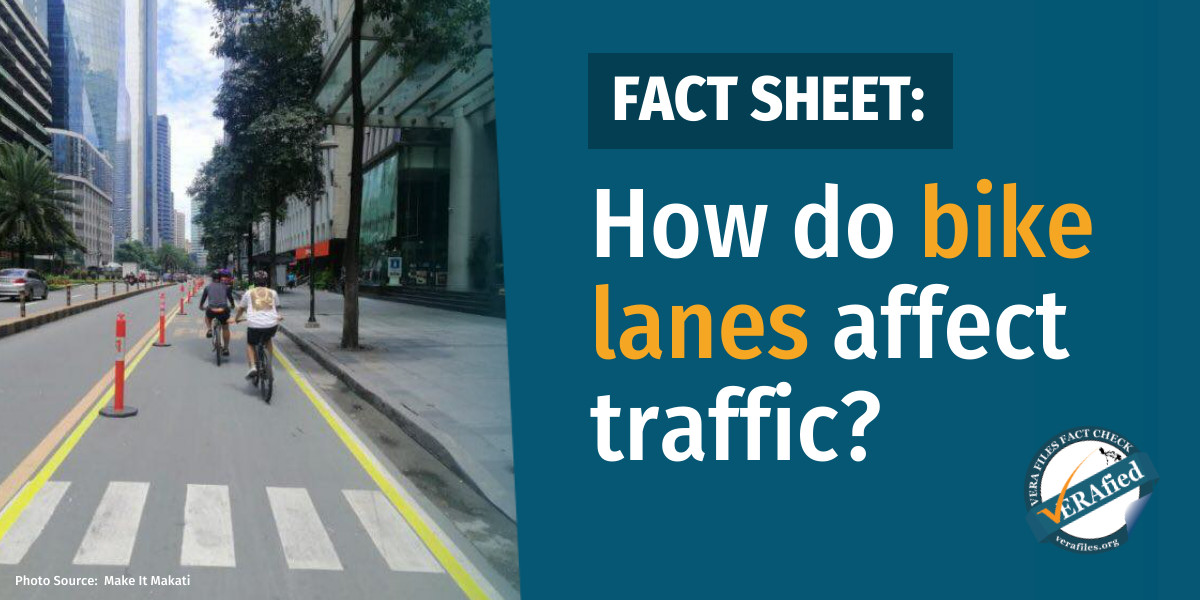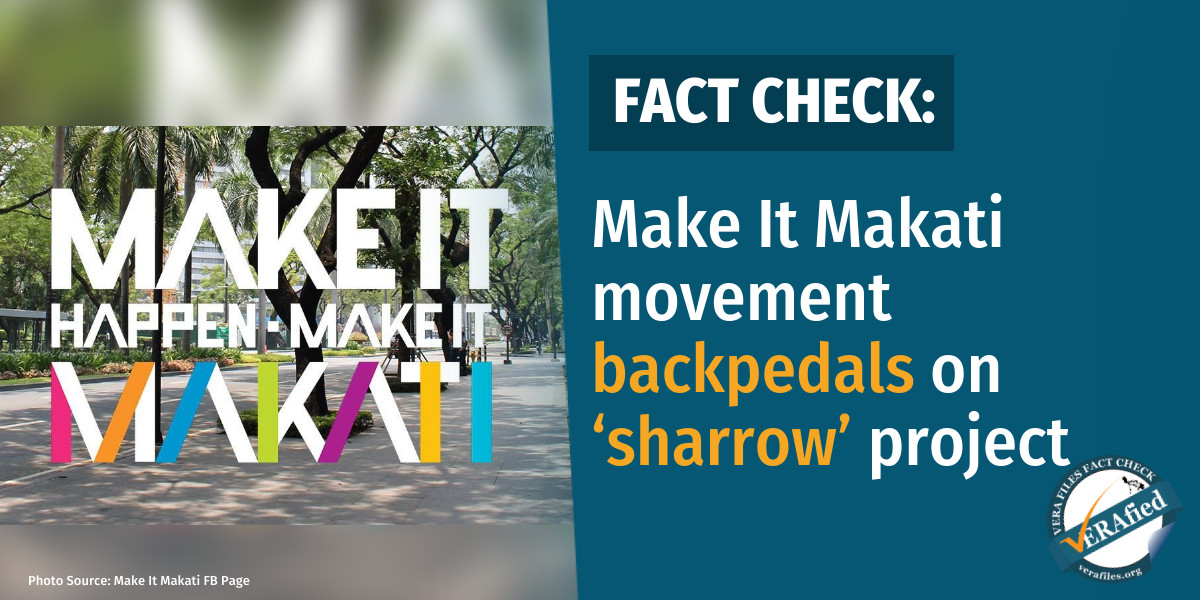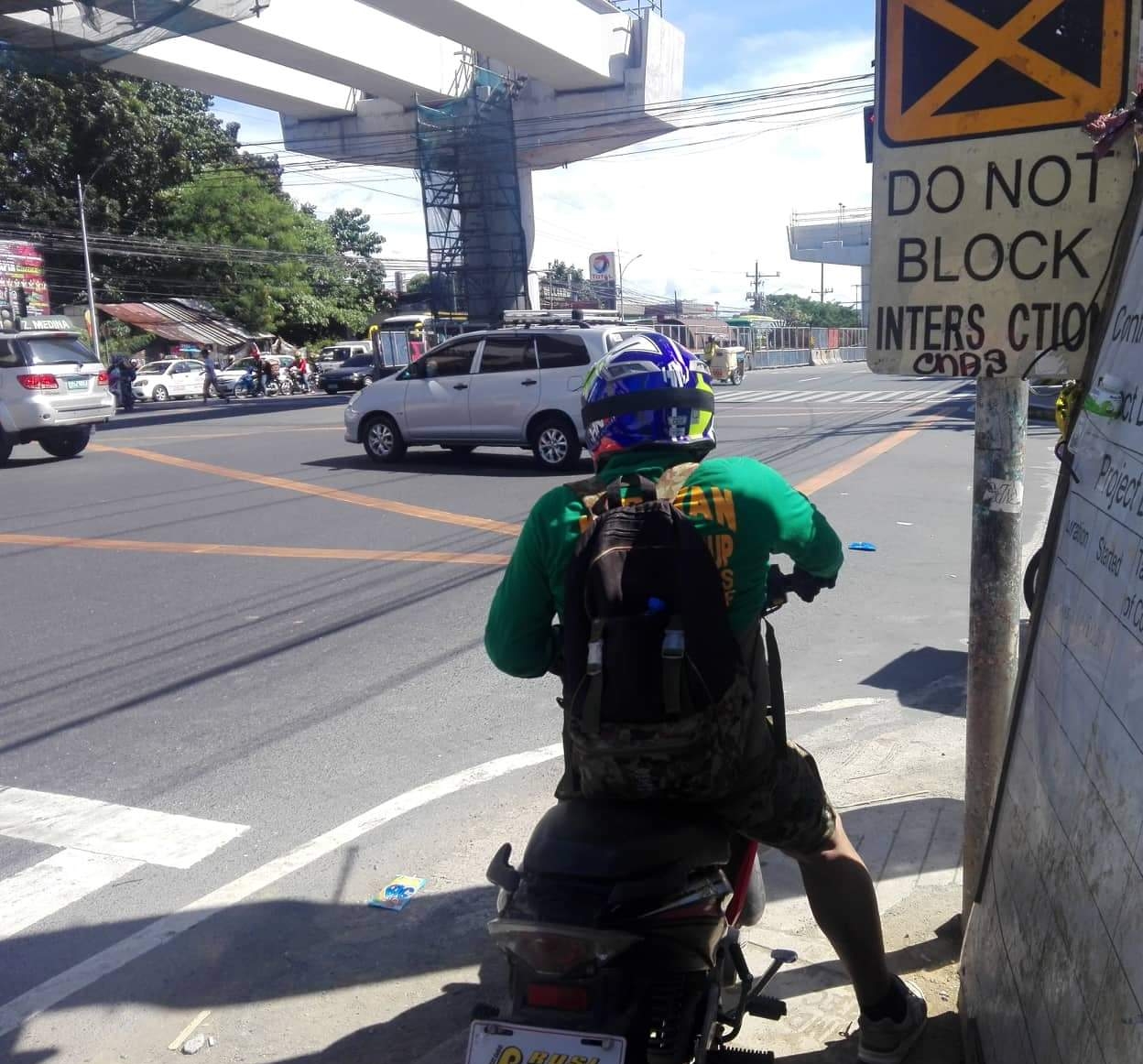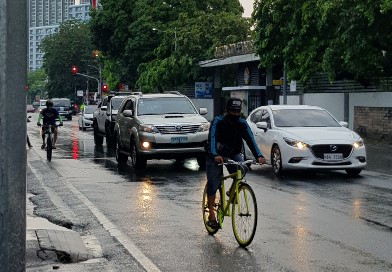Protests against the conversion of bike lanes on Ayala Avenue into shared lanes or sharrows prompted Make It Makati – a collaboration between the local government, Ayala Land, Inc. and the Makati Commercial Estate Association – to defer the plan until March 6.
The plan was supposed to “improve traffic flow in the city” by allowing both four-wheel vehicles and bicycles to use these sharrows starting Feb. 15.
But the project raised questions about its impact on traffic in the area. VERA Files Fact Check explored the effects of bike lanes and sharrows on the safety of cyclists and traffic flow in general.
1. Who bikes in the Philippines?
A Social Weather Stations (SWS) survey in 2022 showed that one in four Filipino households owned a bicycle. The figure is higher in Metro Manila, where one in three households had a bike. Overall, bicycle owners outnumbered car owners 4:1. In Metro Manila, there are five people who own a bike for every person who has a car. One in five households ride a bicycle for essential activities such as going to and from the market and/or their place of work.
The survey, conducted between April 19 and 27, involved 1,440 respondents.
Data from the Metropolitan Manila Development Authority (MMDA) recorded an average of 199,402 cars passing through EDSA daily in 2021. This accounts for 53.6% of all vehicles that use the road.
In June 2020 alone, the agency registered 100,792 cyclists in just nine intersections along EDSA.
2. Does the difference between sharrows and bike lanes matter?
A 2016 study in the United States found that sharrows are dangerous for bikers as they are twice as likely to sustain moderate to severe injuries as a consequence of sharing a lane with cars. In comparison, cyclists in protected bike lanes are likely to sustain only minor injuries. With the bike lanes, there was a 36% decrease in collisions with cars.
Another study from the University of New Mexico and University of Colorado showed that sharrows were more dangerous for cyclists than having no form of bike infrastructure at all.
The National Association of City Transportation Officials, composed of 93 North American cities and transit agencies, warned that sharrows should not be used as a substitute for bike lanes as these shared lanes are “generally, not appropriate on streets that have a speed limit of above 35 mph (56.3 kph).”
A 2019 memorandum from the MMDA set the speed limit for all motor vehicles, except buses and trucks, at 50 kph in all major Metro Manila roads.
3. Do bike lanes affect the flow of traffic?
Traffic and road usage are known to follow the principle of induced demand, which means an increase in supply will invite higher demand. In other words, if private cars are given more road space, it will entice more people to drive their cars.
Several studies have shown that while decreasing lanes for private cars may cause traffic congestion in the beginning, it encourages car owners to use public transportation or a bicycle in the long run. This phenomenon is called “traffic evaporation.”
“Benefits of bicycle commuting such as improved mobility, reduction in the number of vehicles on the streets, lesser carbon emissions and healthier lifestyles have been documented in areas where both bicycle infrastructure and policies have been successful,” a 2019 study of the University of the Philippines-Diliman School of Urban and Regional Planning (UP SURP) stated.
An earlier study from 2017 looked into the effects of bike lane infrastructure on ridership in Manila. It noted that bike lanes and other forms of bicycle infrastructure can lead to a decrease in traffic congestion and greenhouse gas emissions.
“People seemed to have no doubt that promoting bicycling in the city and building a bikeways network would redound to measurable benefits. Among those cited were a reduction in pollution from motorized vehicles, less traffic congestion, lower transport costs and promoting the general health of the population,” it further said.
This was echoed in the 2019 UP SURP study which noted that providing necessary infrastructure such as bicycle lanes and parking areas had a “significant relationship to willingness to bicycle commute and bicycle commuting experience.”
The 2022 SWS study reinforced this. It showed that about 75% of heads of households believed that cycling is just as effective in getting commuters to their destinations as other modes of transportation, and 80% said that more people would use bicycles if the roads were safer.





